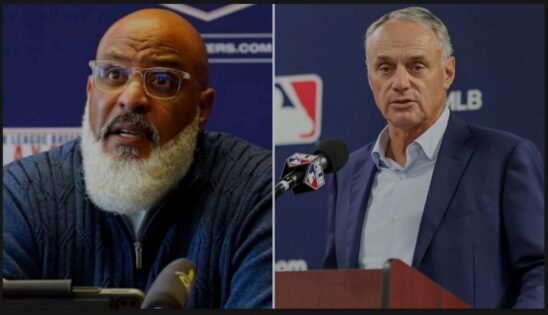It all began with a pitch that just brushed the edge of the strike zone. Enough to spark debate but not quite enough to end it. Edwin Díaz was positioned on the pitcher’s mound. The batter froze. The call came in: strike. But it wasn’t the umpire behind the plate making that judgment. It was the league’s Automated Balls and Strikes (ABS) system, and it immediately sent shockwaves through both dugouts. Managers lost their minds. Ejections followed. And just like that, the tech designed to eliminate arguments became the center of one.
Tony Clark, executive director of the MLB Players Association, isn’t buying the clean-cut narrative that ABS will fix everything. He’s openly questioning the system’s rollout, calling out a lack of meaningful dialogue with players and raising alarms over how the strike zone is being defined. What’s more, he’s advocating for a “buffer zone,” a one-inch leeway around the edges of the zone to account for borderline pitches. For Clark, this isn’t just about fairness. It’s about voice, process, and preserving what players believe is a vital part of the game.
“We haven’t even started talking about the strike zone itself,” Clark warned, pointing out the absence of input from the competition committee and expressing concern that a hyper-precise ABS zone could disrupt the natural flow of the game.
But that stance didn’t sit well with MLB Commissioner Rob Manfred, who shot down the idea of a buffer zone without hesitation. “I don’t believe that technology supports the notion that you need a buffer zone,” Manfred said, emphasizing that the purpose of ABS is to eliminate grey areas, not reintroduce them. He compared it to tennis, where line calls are definitive and arguments are obsolete.
Enter David Samson, former Marlins president, who didn’t mince words on his podcast Nothing Personal. He accused Clark and Manfred of deliberately picking a fight. “They’re talking over each other, they’re talking through each other, they’re doing all the things that we look for when we are worried about the possibility of a work stoppage, because they are so singularly focused on making sure they don’t agree with any position the other one has.”
Samson didn’t stop there. He suggested that Clark raise the buffer zone idea, knowing it would immediately spark resistance from Manfred:
“The only explanation I have is that Tony Clark and Rob Manfred are just finding more reasons to bite at each other. It’s like when kids pick at each other or siblings, and you just know something’s gonna escalate.”
He made it clear the disagreement isn’t truly about strike zone logistics or player input, but something deeper and more combative:
“Tony Clark drops an implementation on all of us as though we should feel sorry that MLB may be going to implement ABS because the players are not going to agree to the system, knowing that that’s an absolute right that was negotiated inside the CBA.”
Same script, different fight: MLB’s familiar labor pattern
If the clash over the Automated Balls and Strikes (ABS) system feels familiar, that’s because it is. The standoff between Tony Clark and Rob Manfred is the latest chapter in a long-running saga where the league and the players’ union find themselves on opposite ends, again. This time, the fight is over strike zone margins and technological precision. The core narrative remains unchanged, issues with communication breakdown, public displays of stance, and an ongoing thread of skepticism prevail.
We’ve seen this movie before. In 2020, MLB and the MLBPA sparred bitterly over pandemic-shortened season logistics. Clark accused the league of acting in bad faith during salary negotiations, while Manfred admitted, “I never thought we’d get here” after tensions boiled over. The 2022 lockout didn’t just freeze baseball; it exposed deep fractures between players and the league. Players didn’t just want better pay structures; they demanded a real voice in shaping the game’s future. From expanded playoffs to service time manipulation, they pushed hard for transparency and control over the rules that directly impact their careers.
In the year 2024, a change, with the introduction of the pitch clock, garnered attention for its efforts to hasten the pace of the game; behind the scenes, it encountered obstacles on its path to implementation. It involved negotiations spanning months as players expressed their apprehensions regarding disruptions to their rhythm and routines, along with concerns about increased risk of injuries, before acquiescing to the new rule. With even jersey patches sparking a conflict. What initially appeared as a branding adjustment morphed into a dispute over decision-making authority and timing of such matters.
The ABS debate fits that pattern to a tee. Clark raises process concerns and suggests a buffer zone. Manfred dismisses it outright. And rather than work toward a solution, the two sides harden their positions. It’s not just about the technology, it’s about who has the authority to shape the game.
The irony? ABS was designed to bring clarity. Instead, it’s revealing just how blurry the relationship between labor and league remains.
The post MLBPA Boss Accused of Sparking Feud With Rob Manfred as Ex-MLB Prez Slams Stance on Robo Umps appeared first on EssentiallySports.
